Complimentary worldwide shipping on orders over $400 · No import tariffs for most countries
Complimentary worldwide shipping on orders over $400 · No import tariffs for most countries
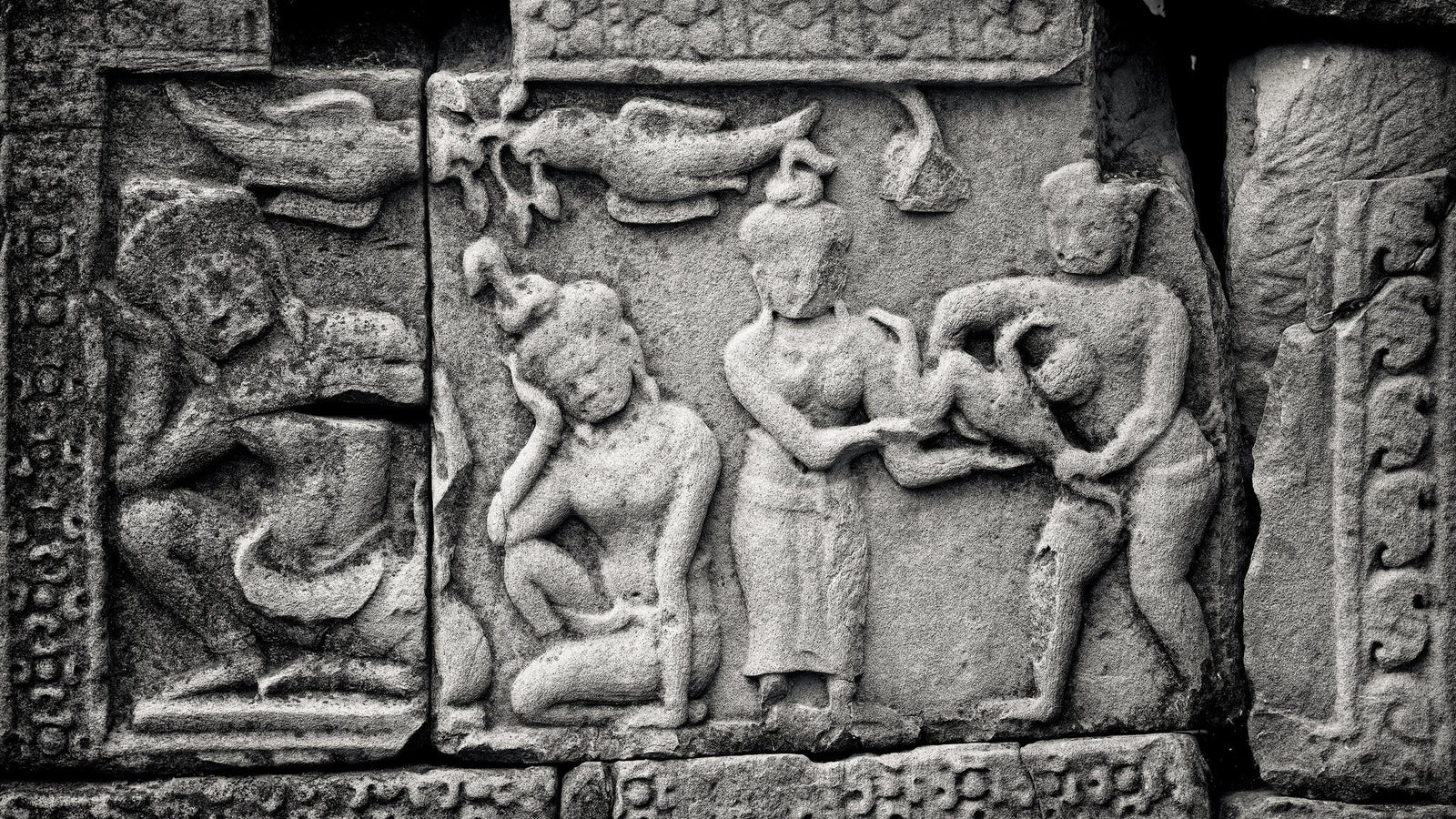
Krishna Beneath the Rain-God’s Cloak: A Tale in Stone
4 min read
The gods move silently
when the soul of the world must
slip past sleeping guards.
—from a field note beside Baphuon Temple
—
There is a hush that lives in Baphuon’s stone—not the hush of absence, but of something remembered too deeply to be spoken aloud. Walk the southern causeway, where laterite and sandstone rise with soft defiance against time, and you may feel it. Not only the heat, or the heaviness of ancient empire, but the pause between breaths—a silence that once cradled the life of a god in swaddling cloth.
I return again and again to this temple, to its southern gate, where an overlooked sequence of low-relief carvings tells—softly, reverently—the early life of Krishna. These stones do not declare. They murmur. Their figures are small and spare, only a few inches high, rendered not for spectacle but for devotion. And yet within these modest forms, a vast cosmology stirs: fear and prophecy, maternal courage, divine concealment, and the gentle mercy of illusion.
The tale carved here is drawn from the Bhagavata Purana, but it arrives at Baphuon not as scripture, but as touch—the chiselled breath of sacred hands across stone. It is a story of danger and escape, of a child born under a death sentence, and of how the gods, unseen and unwavering, conspire to preserve the thread of dharma.
In Mathura, long ago, the tyrant Kamsa received a prophecy: his sister’s eighth child would bring about his end. In fear, he commanded that every newborn boy in the kingdom be slaughtered. A massacre of innocence followed—infants dashed against stone, a horror that echoes across mythic time, echoing too the eternal terror of kings: that purity might unmake them.
And yet Krishna lived.
Here, in Baphuon, the sculptors preserved his deliverance in two luminous panels of stillness and grace. In the first—Krishna’s Escape from Mathura—Vasudeva and Devaki lie in repose, their heads resting on their right hands in a posture of holy weariness. To the right, Devaki offers the newborn Krishna to her husband, entrusting her child to the unseen current of fate.

Figure 1. Krishna’s Escape from Mathura, Baphuon Temple, Angkor, Cambodia.
Vasudeva and Devaki sleep, their hands supporting their heads. At the right, Devaki hands her infant son Krishna to Vasudeva, surrendering him to the journey ahead.
Southern gopura II, Baphuon Temple.
The texts tell us that Indra, moved by divine compassion, sent rain to swell the Yamuna River, forging a secret path. Shesha, the many-headed serpent, rose to shield Krishna beneath his hood, forming a living canopy. Gates parted. Guards slept. The world fell into trance—just long enough for divinity to pass through untroubled.
And here, in sandstone, the sculptor translated miracle into stillness. No storm. No serpent. No river. Only a breath-held hush. But look closely: the hollow of a hand, the tilt of a head, the way Krishna is held—not with triumph, but with trembling grace. The atmosphere itself holds the weight of divine passage.
In the second panel—The Exchange of Children—fate turns silently. Vasudeva arrives at the home of the cowherd Nanda. The household lies sleeping. He places Krishna beside Yashoda and lifts her infant daughter in exchange. The girl, Maya, illusion herself, will take Krishna’s place.
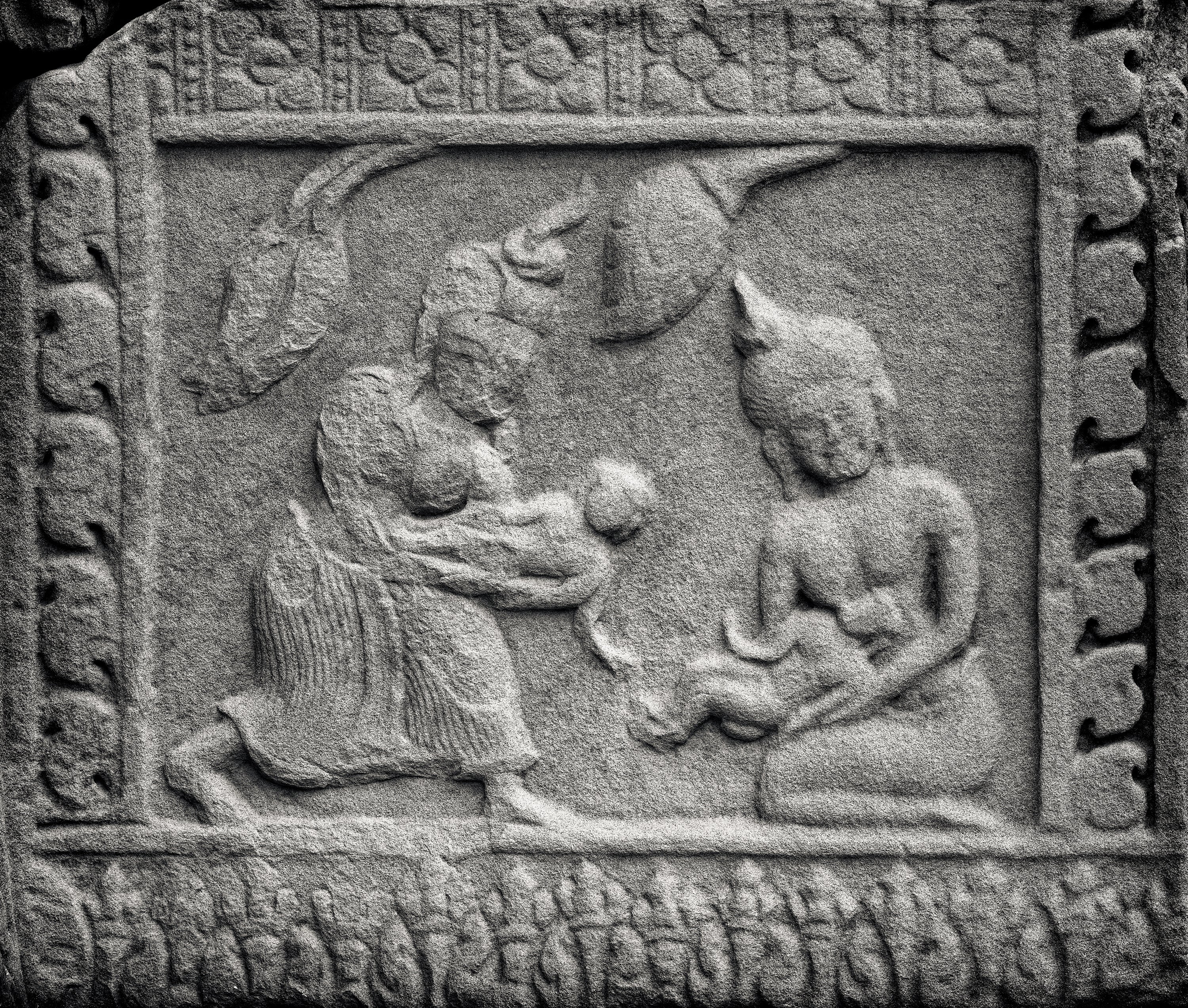
Figure 2. The Exchange of Children, Baphuon Temple, Angkor, Cambodia.
Devaki again hands Krishna to Vasudeva. The repetition of gesture, carved with sacred insistence, suggests the timelessness of the act.
Southern gopura II, Baphuon Temple, adjacent to Figure 1.
This is not a moment of spectacle, but of breath-held tenderness. In an age where power is wielded through cruelty, the divine chooses another way: through slumber, through silence, through a single child laid upon the bed of another. When Yashoda awakens, too weary to recall the child’s gender, she simply accepts. And so, unknowingly, becomes the mother of God.
This is the grace of the tale—and of the carving. The miracle lies not in what is shown, but in what is silently held. The gods do not boast. They shelter. They shield. They slip through history like a whisper. A rain-slicked path. A serpent’s curved hood. A sleeping city. A mother’s offering. A child who becomes the axis of an age.
And what of the sculptor? What stirred his hand, centuries after the story had crossed oceans and tongues, to render it here in Khmer stone? Perhaps it was reverence. Or perhaps the quiet knowledge that such tales do not belong to a single people—but to the deep, shared longing of the soul: that innocence be spared, and tyranny undone not by might, but by mystery.
Baphuon has known collapse and resurrection. Once the heart of a vanished city, it was dismantled stone by stone and rebuilt like a cosmic jigsaw. These carvings, long buried, now re-emerge as prayers in stone. And here, Krishna lives again—still an infant, still protected, still entrusted into trembling hands beneath the rain-god’s cloak.
Rain falls on the stone
but beneath the serpent’s hood
the child does not wake.
Let the world sleep a little longer. Let the gates remain ajar. Somewhere, always, a child of light is being carried through the storm.
—
Even now, the gods walk beside us—hooded, silent, unseen.
Also in Library
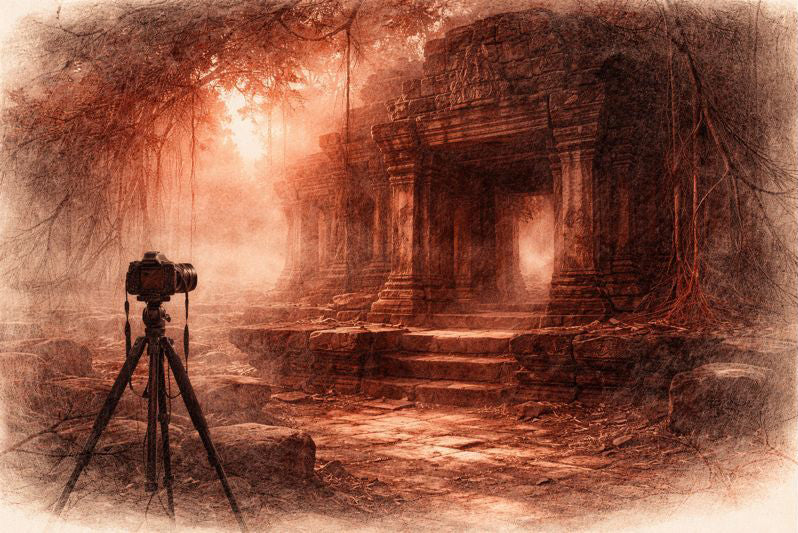
Before the Shutter Falls
3 min read
Before the shutter falls, fear sharpens and doubt measures the cost of waiting. In the quiet hours before dawn, the act of not-yet-beginning becomes a discipline of attention. This essay reflects on patience, restraint, and the quiet mercy that arrives when outcome loosens its hold.
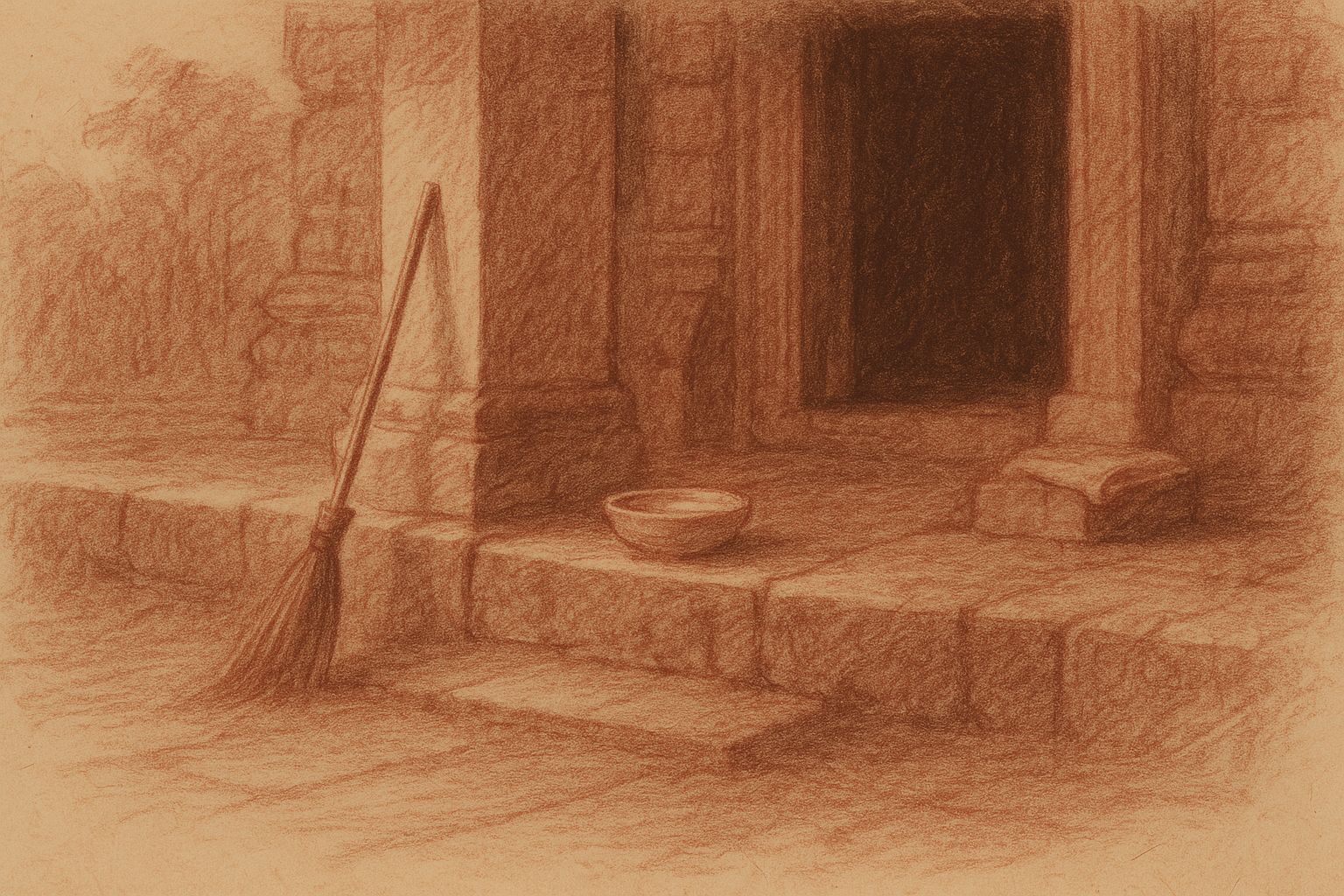
Those Who Keep the Way Open — On the Quiet Guardians of Angkor’s Thresholds
3 min read
Quiet gestures shape the way into Angkor — a swept stone, a refilled bowl, a hand steadying a guardian lion. This essay reflects on the unseen custodians whose daily care keeps the thresholds open, revealing how sacredness endures not through stone alone, but through those who tend its meaning.
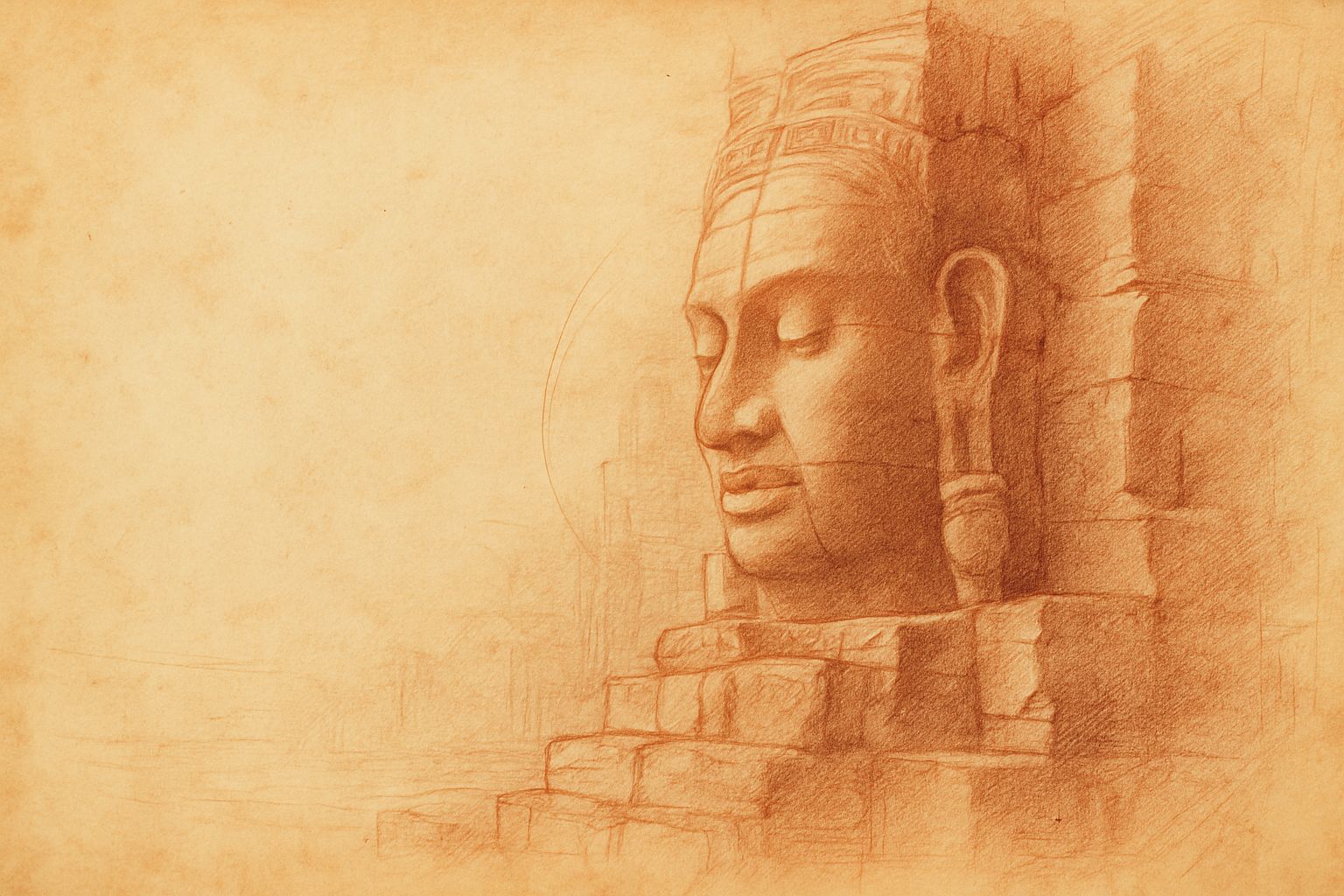
Multiplicity and Mercy — The Face Towers of Jayavarman VII
5 min read
A new vision of kingship rises at the Bayon: serene faces turned to every horizon, shaping a world where authority is expressed as care. Moving through the terraces, one enters a field of steady, compassionate presence — a landscape where stone, light, and time teach through quiet attention.
Join My Studio Journal
Receive occasional letters from my studio in Siem Reap—offering a glimpse into my creative process, early access to new fine art prints, field notes from the temples of Angkor, exhibition announcements, and reflections on beauty, impermanence, and the spirit of place.
No noise. No clutter. Just quiet inspiration, delivered gently.
Subscribe and stay connected to the unfolding story.
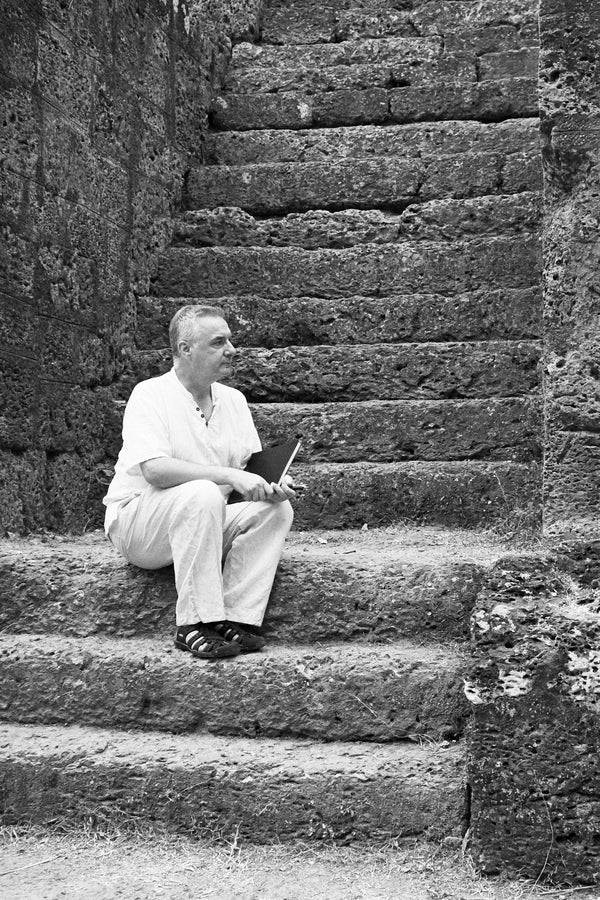
Join My Studio Journal
Receive occasional letters from my studio in Siem Reap—offering a glimpse into my creative process, early access to new fine art prints, field notes from the temples of Angkor, exhibition announcements, and reflections on beauty, impermanence, and the spirit of place.
No noise. No clutter. Just quiet inspiration, delivered gently.
Subscribe and stay connected to the unfolding story.
